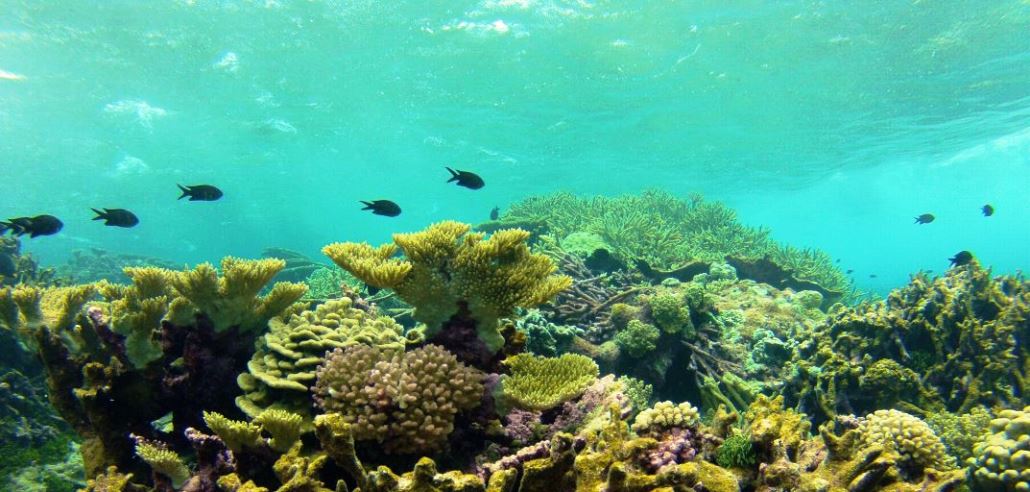Nature-based approaches can effectively protect people and property, and are often more cost-effective than conventional structural approaches.
That’s according to a new report, The Protective Value of Nature, which synthesizes the latest science from across the nation evaluating the performance of natural systems such as wetlands and forests in the face of hurricanes, floods, wildfires, and other natural disasters. As the 2020 hurricane season begins, Midwest flooding builds, and wildfire risks mount, the report also recommends solutions for increasing community resilience.
“Unfortunately, hurricanes, floods and wildfires can’t be postponed because of the pandemic,” said Jessie Ritter, director of water resources and coastal policy at the National Wildlife Federation.
“But if we invest in protecting and restoring wetlands and other nature-based systems, we can effectively safeguard lives and homes. The science is clear: solutions that work with nature often provide more bang for the buck at reducing hazard risk than structural approaches,” she explained.
“In an era where natural disaster risks continue to mount, we find that there is a significant opportunity to expand the use of natural approaches to protect people and property,” said Wesley Dupont, Chief Operating Officer, Allied World Group.
“The science and success stories in this report demonstrate that natural defenses are effective — upending perceptions about conventionally engineered approaches being superior to working with nature,” he added.
Natural approaches include intact or restored systems, such as wetlands, dunes, floodplains, forests, and coral reefs — as well as nature-based features, constructed by people, that mimic natural systems. Working with nature also brings additional benefits, from cleaner drinking water and healthy fish and wildlife habitat, to increased recreational opportunities.
“Healthy, intact ecosystems are often adapted to natural disturbances such as floods and wildfires, so they may be better able to withstand or rebound from extreme weather and climate-related hazards and adjust to ongoing environmental changes,” said Patty Glick, senior scientist for the National Wildlife Federation and lead author of the report.
“On the other hand, conventional structural approaches — like seawalls, levees or dams — often require ongoing maintenance, and may need costly repairs when they fail or are damaged,” she continued.
To maximize the critical role natural defenses can play in enhancing the resilience of human and ecological systems to natural disasters and climate change, the report recommends:
- Protecting and restoring existing features providing natural defenses. Identifying where natural systems provide protective services to communities through robust mapping and planning efforts at the local, state, and federal level can help to prioritize protecting/restoring these systems including in State Hazard Mitigation Plans;
- Mainstreaming the use of natural infrastructure across sectors. For example, ensure that natural infrastructure is an eligible use of the Surface Transportation Block Grant program as part of the next surface transportation reauthorization bill. Congress should also invest additional resources specifically to help states improve the resilience of their surface transportation infrastructure, including through the use of natural features;
- Ensuring that the U.S. Army Corps of Engineers (USACE) fully complies with its existing mandates to evaluate natural infrastructure project alternatives where practicable for flood and storm damage risk reduction. Additionally, Congress should create new incentives for the use of natural infrastructure solutions for flood protection, including by lowering the nonfederal sponsor cost-share for such USACE projects;
- Improving risk assessment and encouraging smart development. Significantly increased resources are needed to swiftly complete new national flood maps, especially where data is sparse. Congress must also reauthorize and reform the National Flood Insurance Program, breaking the chain of short-term program extensions; and
- Dramatically scaling up investments in community resilience and supporting research. Ensure that robust allocations for enhancing ecosystem resilience and deploying nature-based risk reduction measures are a part of major funding programs, such as disaster recovery and mitigation efforts (e.g., FEMA’s Hazard Mitigation Assistance programs and the U.S. Department of Housing and Urban Development’s Community Development Block Grant Disaster Recovery and Mitigation funds), as well as water resource development programs.
Photo shows a healthy coral reef at the Palmyra Atoll National Wildlife Refuge in the central Pacific. Credit: Kevin Laffert / USGS.

